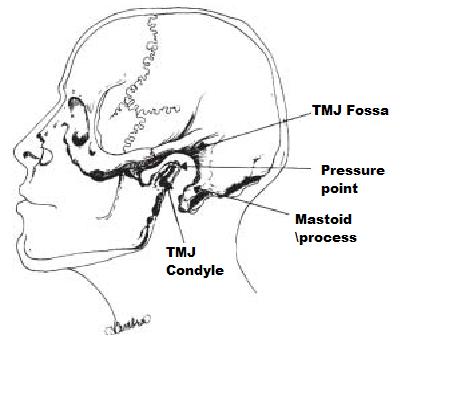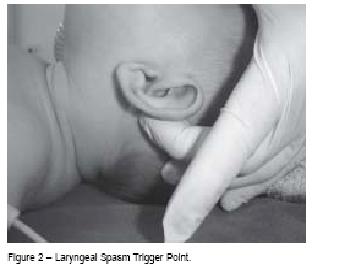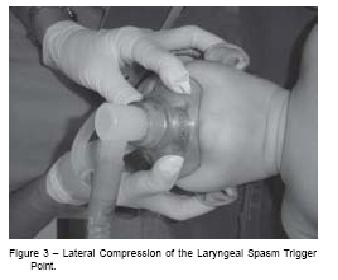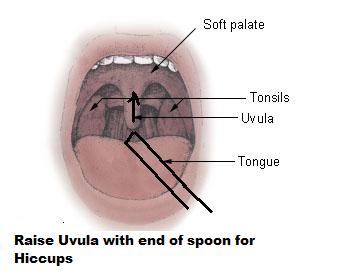Laryngeal spasms are a frightening life threatening condition in anesthesia. Bilateral Pressure behind the ears at TMJ level might release this spasm in kids. Hiccups can be relieved by lifting the “thingy” uvula in the back of your throat’s palate.
Treatment of laryngeal spasm in pediatric anesthesia by retroauricular digital pressure. Case report*
Raquel Reis Soares, TSA, M.D.; Eliana Guimarães Heyden, M.D.
Rev Bras Anestesiol 2008; 58: 6: 631-636 free article here
- two cases 3 and 6 years old developed laryngeal spasms during anesthesia
- classical treatment
– administration of 100% oxygen with positive pressure per ventilatory unit (balloon and mask)
– intravenous succinylcholine, 0.25 to 1 mg.kg-1. - “bilateral digital pressure behind the ear lobes, which reversed the laryngeal spasm in a few seconds”
- This appears to be at level of |TMJ joint behind the ears:
Ear pressure BILATERALLY
Ear pressure Bilaterally behind ears on tip TNJ condyle bilaterally:
Another trigger that can instantly relieve hiccups is to raise the uvula (the handle of a spoon works good) and gently hold it up for as long as can handle or 30 sec. Works in most cases and if not, I give a spoonfull of sugar to eat as well… try not to touch tongue.
Comment – I’ve included the pics from the article because I think this could be a lifesaving manouver… Let me know if anyone has used either technique…




